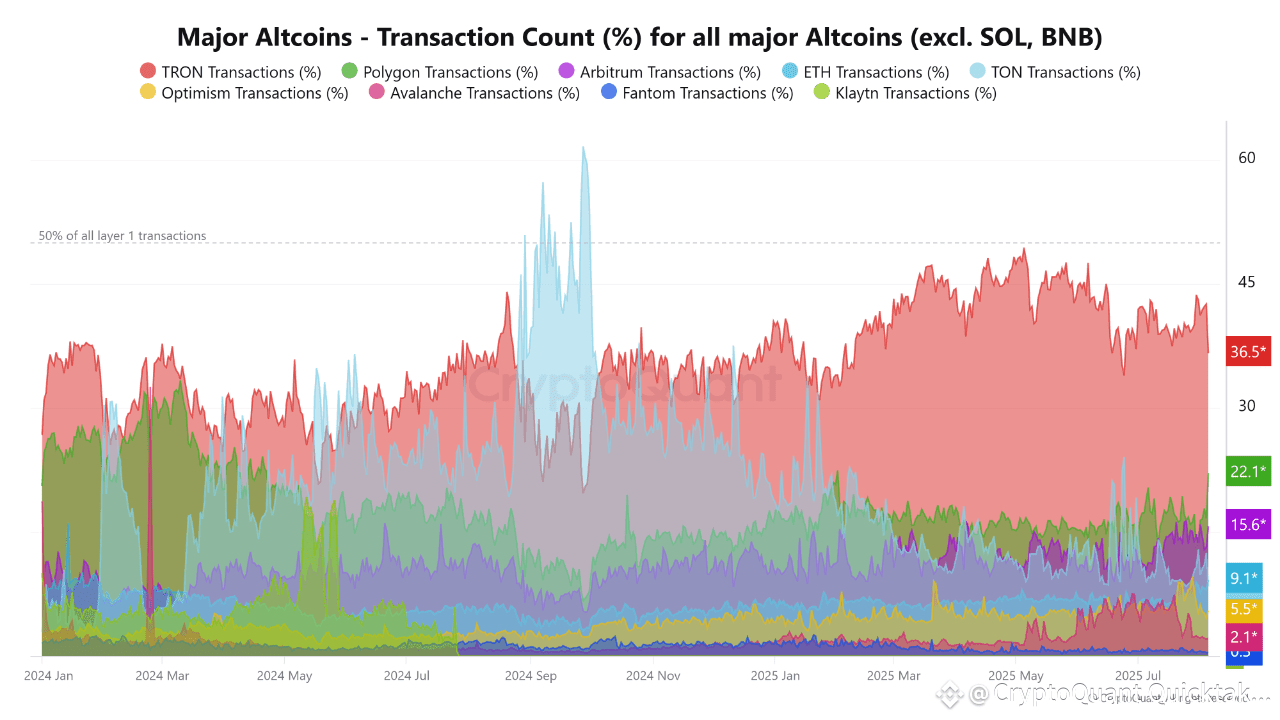TRON’s daily transaction volume in July 2025 ranged between 8 and 9 million transactions per day. Despite occasional fluctuations, the 30-day moving average held consistently above 8 million, reflecting sustained network activity. In the final days of the month, a slight decline was observed—mainly due to Bitcoin’s price drop and its effects on exchange-based transactions—yet the overall upward trend remained intact. This resilience highlights users’ ongoing trust in the network. TRON-based applications, especially those involving USDT and digital wallets, continued to operate at high engagement levels. The network has seemingly overcome seasonal volatility and is now functioning in a high-utilization phase with no signs of technical instability or demand weakness. If the current trajectory continues, TRON may soon retest the 10 million transaction mark.
Notably, TRON maintains the lead in daily transaction volume among all major Layer 1 blockchains. By July 2025, it accounted for 36.5% of total daily transactions, consistently maintaining a market share between 30% and 45% over the past 18 months. At no point during this period did its share fall below 25%, reinforcing its strategic dominance. Several factors contribute to this position: ultra-low gas fees, deep integration of USDT, high transaction speeds, near-instant confirmations, and compatibility across platforms. These advantages have made TRON the preferred network for stablecoin usage and high-frequency transfers. As long as stablecoin transactions remain the core use case for blockchain adoption, TRON is poised to maintain its leadership.
More than just a high-throughput chain, TRON offers a stable, cost-effective, and performance-optimized infrastructure. Its role in the evolving blockchain landscape is now central, and its dominance in transaction volume confirms that TRON is a pillar of global crypto infrastructure today—and likely for years to come.


Written by Arab Chain


